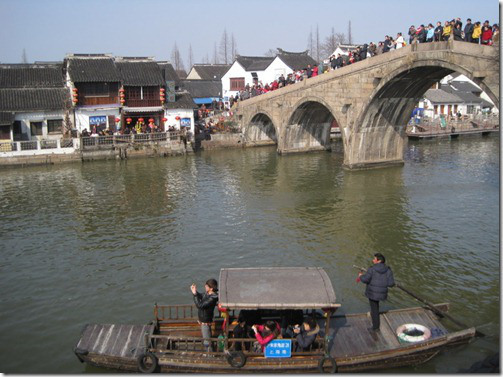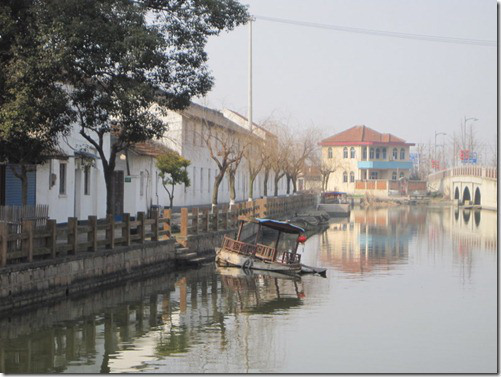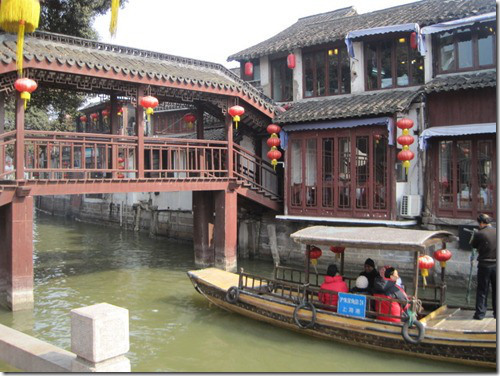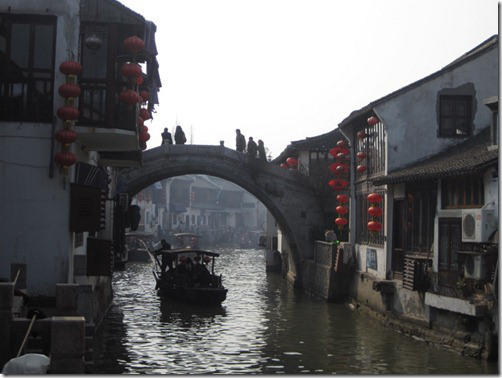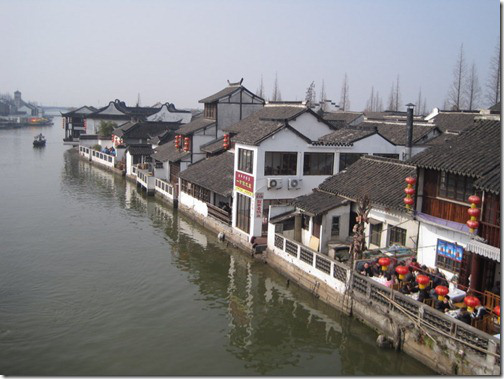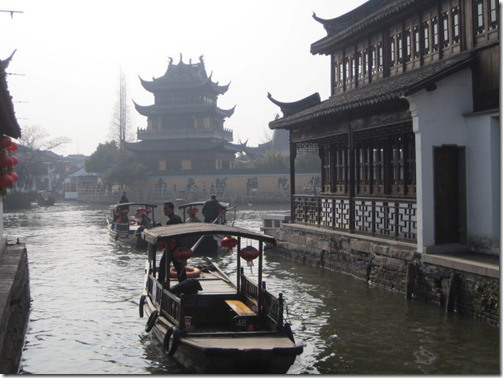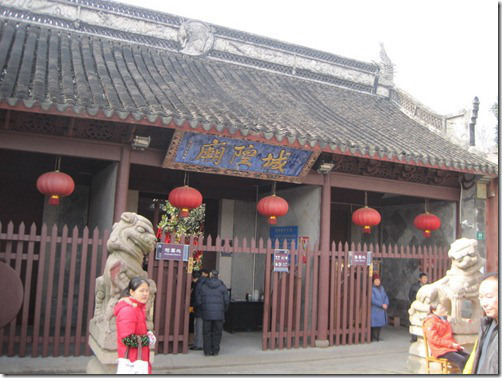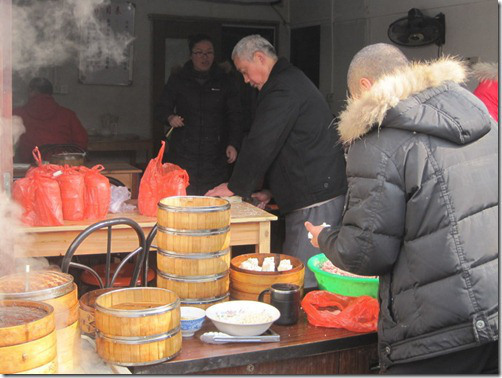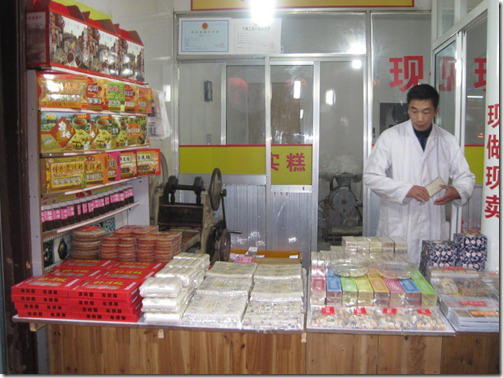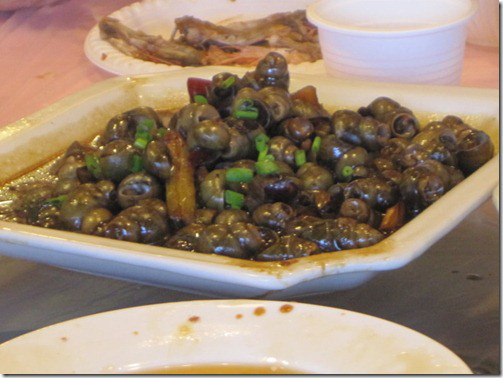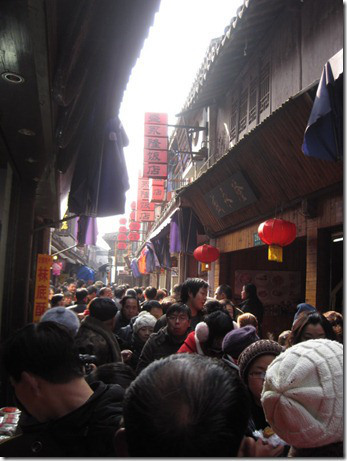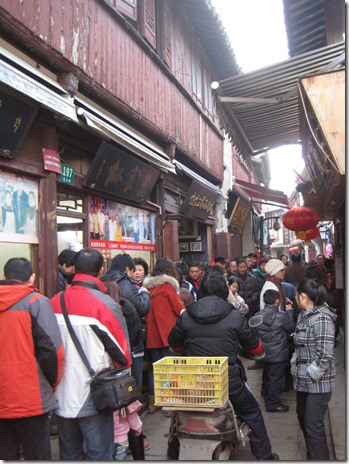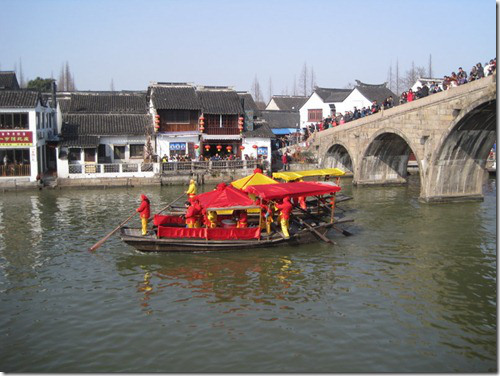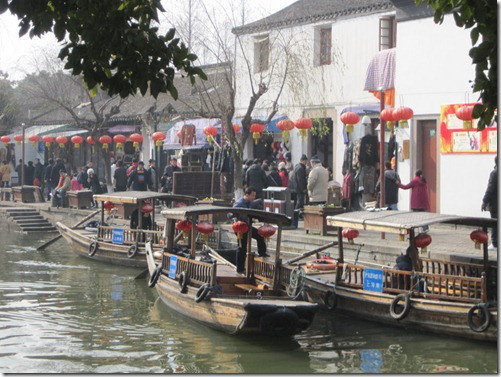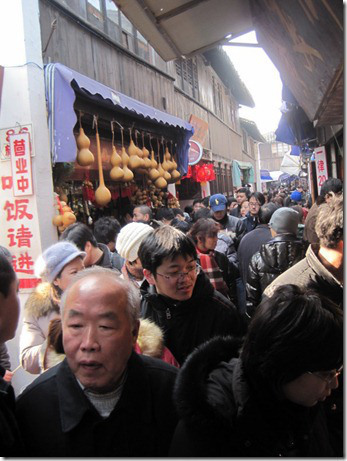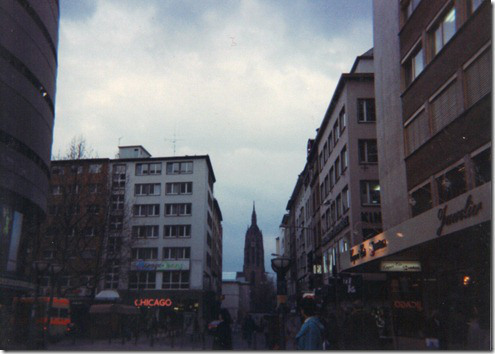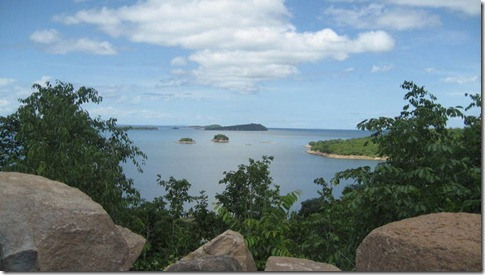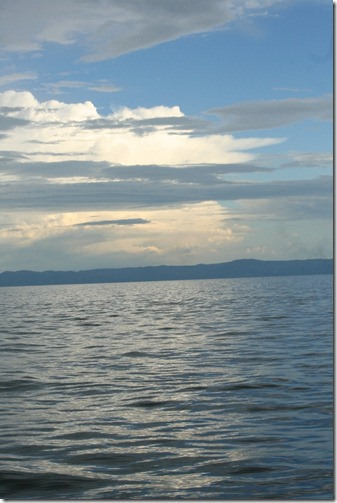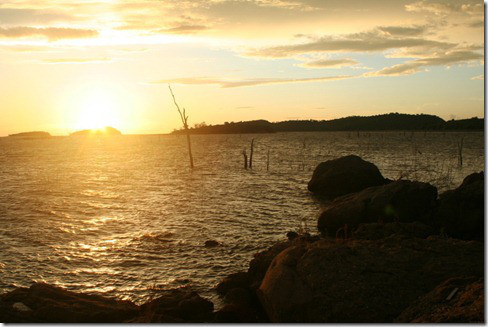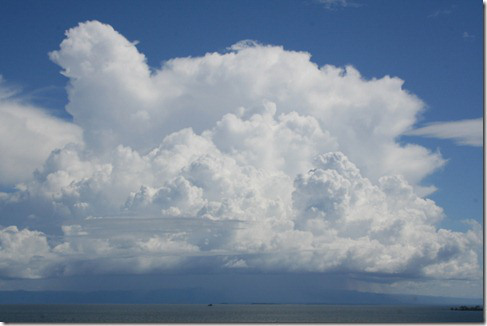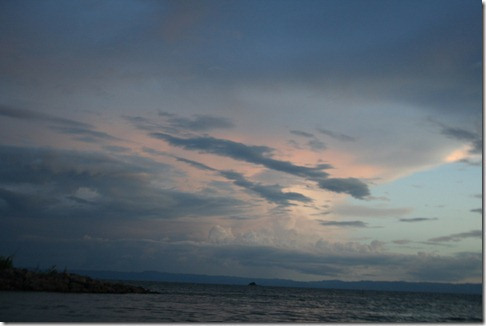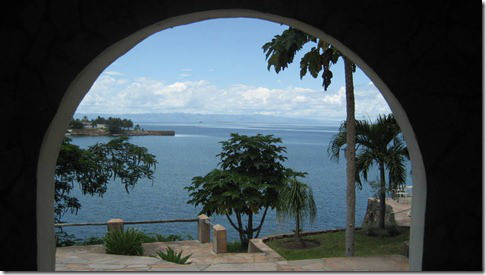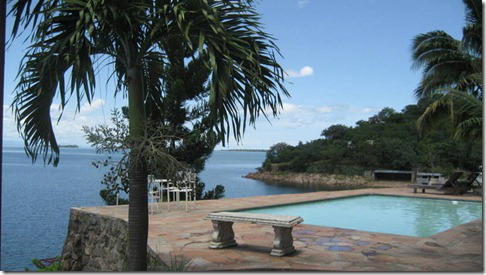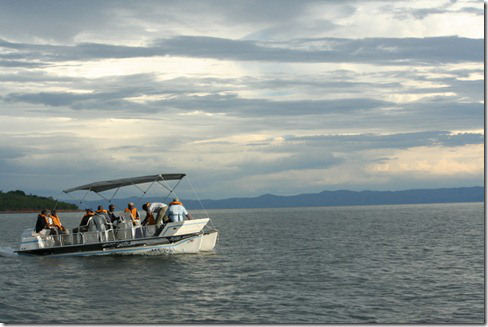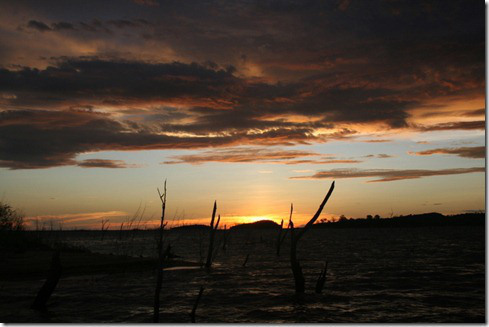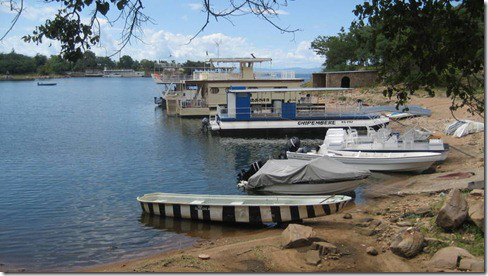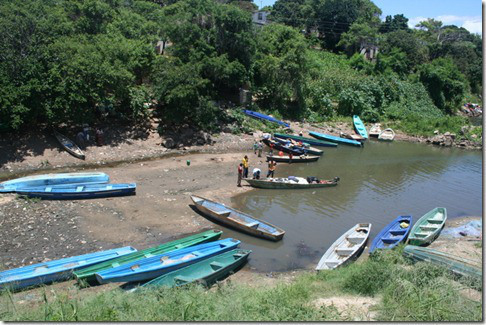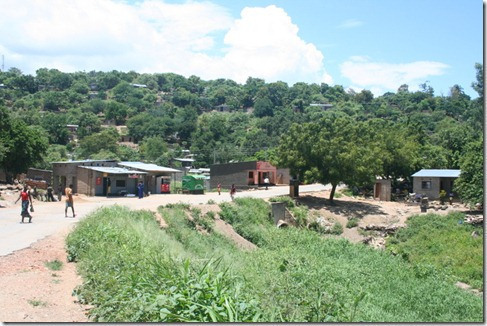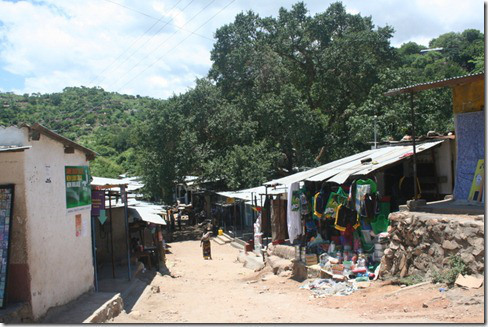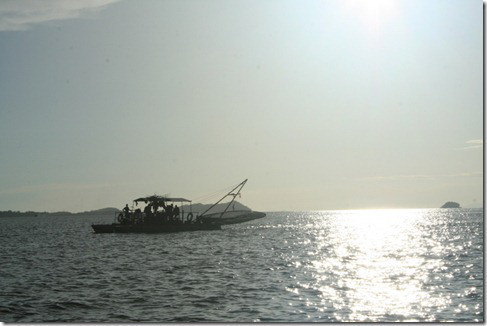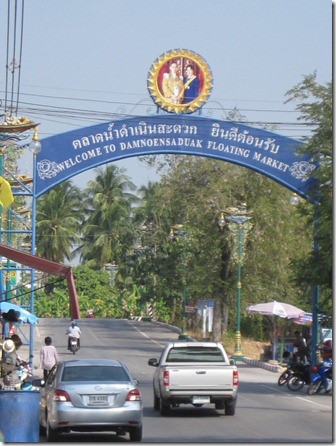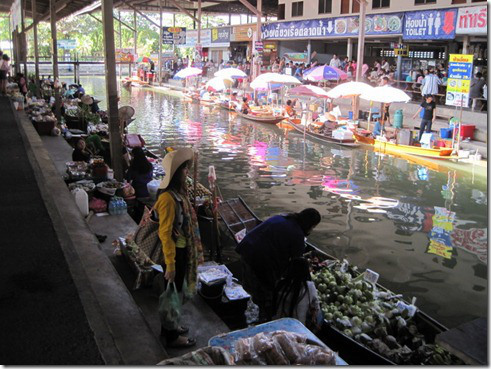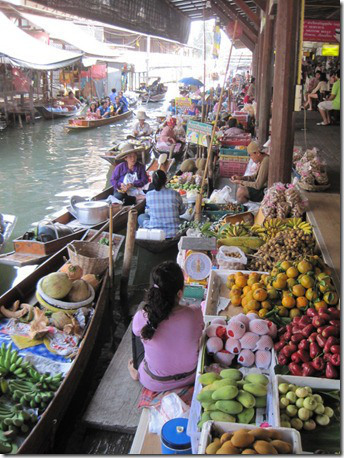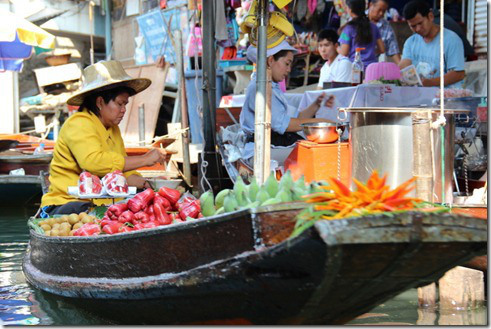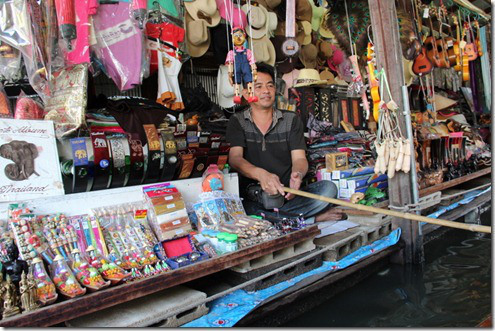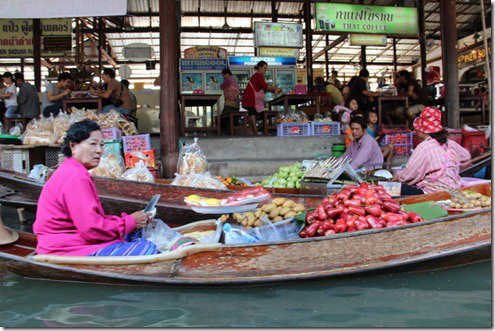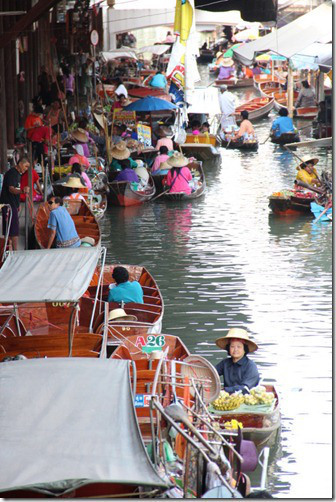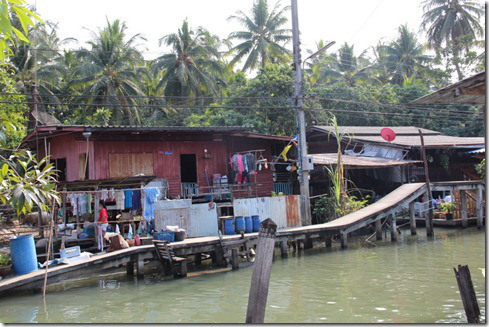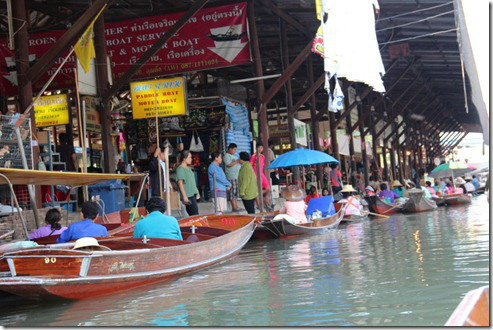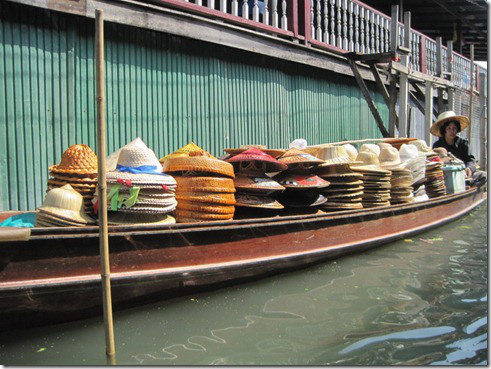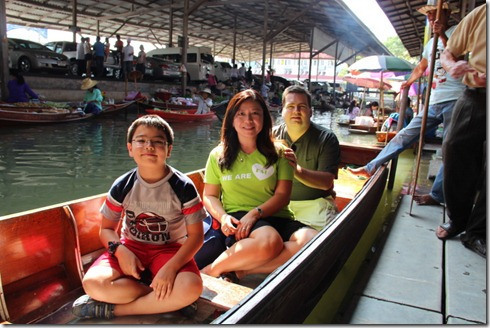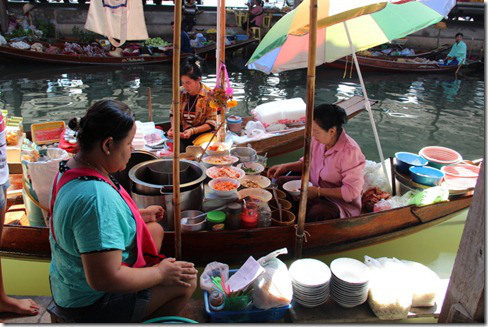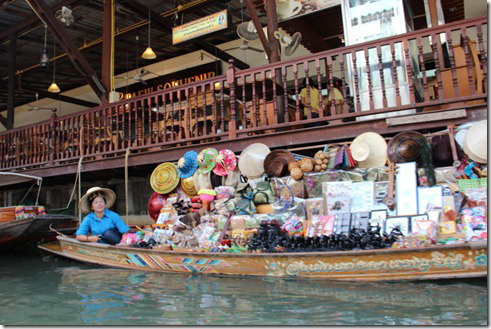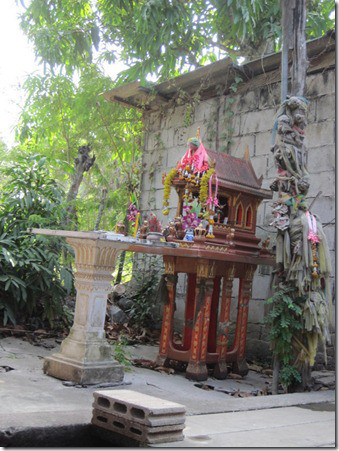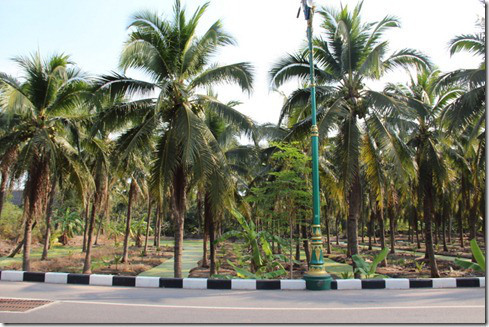M.G. Edwards's Blog, page 21
January 28, 2012
Zhujiajiao, the Venice of Shanghai
On January 26, 2012, my family and I traveled to Zhujiajiao, an ancient village in Qingpu District about 45 minutes west of Shanghai. Zhujiajiao bills itself as the "Venice of Shanghai." Why not the "Venice of China"? Well, perhaps because China has hundreds, if not thousands, of traditional villages like Zhujiajiao scattered throughout the country.
Founded over 1,700 years ago, Zhujiajiao has canals, wooden oar-driven tour boats, stone arch bridges, and plenty of traditional Chinese architecture. However, it bears little resemblance to Venice, Italy.
Some of the village's attractions include a Buddhist temple that rises above town, a small Temple of the Town God dedicated to the spirits that protect the village, and a theater that offers performances of the Chinese classic play The Peony Pavilion during the summer months and on Saturdays.
The traditional Qing Dynasty-era architecture that lines a picturesque network of canals is a main attraction, as are the Chinese foods, beverages, and souvenirs for sale from many vendors. Lotus root, soy beans, pork, toad, and seafood are local specialties.
The toad was delectable.
The snails aren't your garden variety escargot.
Dried, not fried, chicken is also a local favorite. Not recommended for tourists.
The crowds during Chinese New Year were horrific. We thought we were going to be crushed in an alleyway! Fortunately, body heat kept us warm on a cold winter day.
In spite of the crowds, the atmosphere was festive during our visit. Dragon boats with drums beating sailed in the canals, and well-groomed dogs sported bright red Chinese New Year coats. Red lanterns with gold tassels festooned the streets.
Zhujiajiao is a nice daytrip from Shanghai along with Da Guan Yuan, a park on the shore of Dian Shan Hu (lake) that replicates the garden featured in the classic Chinese novel The Dream of the Red Chamber.
Just don't go during when it's busy!
Here are some short video clips from our visit.

Zhujiajiao, China–January 26, 2012
Zhujiajiao, China–January 26, 2012
Zhujiajiao, China–January 26, 2012
Zhujiajiao, China–January 26, 2012
Dragon boats in Zhujiajiao, China–January 26, 2012
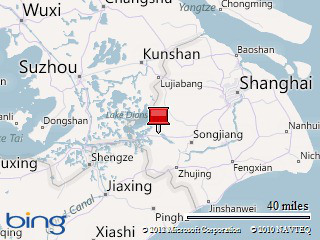
P.S. This has been a busy week in China with family and Chinese New Year's festivities. Last night we could barely sleep as the locals blew off rounds of fireworks to welcome the god of wealth on the 5th day of New Year's. I have to say that I'm looking forward to some peace and quiet – not to mention warmer weather – back in Thailand. We return home to Bangkok tomorrow.
M.G. Edwards is a writer of books and stories in the mystery, thrill and science fiction-fantasy genres. He also writes travel adventures. He recently published a collection of short stories called Real Dreams: Thirty Years of Short Stories available as an ebook and in print on Amazon.com. His upcoming travel novel, Kilimanjaro: One Man's Quest to Go Over the Hill, will be available in March 2012. He lives in Bangkok, Thailand with his wife Jing and son Alex. For books and stories by M.G. Edwards, visit his web site at www.mgedwards.com or contact him at me@mgedwards.com. Find him on Facebook or @m_g_edwards on Twitter.








January 23, 2012
Temple of the Town God–Shanghai, China
Happy New Year! It's the first day of the Year of the Dragon in China. Today we visited the Temple of the Town God in Shanghai. It was crowded! I haven't seen so many people in one place in a long time — which means a lot in a place like China with more than 1.2 billion people.
Thousands converged on this popular attraction to see the lighting of the lanterns on decorated floats on the water and other Chinese New Year's festivities. The lights were simply spectacular. The traditional Chinese architecture added to the ambiance.
Enjoy these video clips of the Temple of the Town God. Happy New Year! 新年快乐!

Temple of the Town God, Shanghai, China–January 24, 2012

Temple of the Town God, Shanghai, China–January 24, 2012

Temple of the Town God, Shanghai, China-January 24, 2012
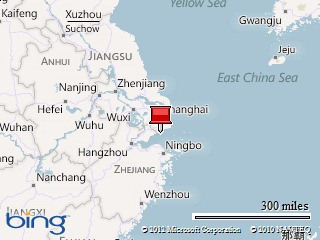








January 22, 2012
Fireworks in Shanghai, China – Happy Year of the Dragon!
Here's a video clip of some amazing firework displays in Shanghai, China at midnight on January 23, 2012, to celebrate the arrival of the Chinese New Year. This year, the Year of the Dragon, is a special one for the Chinese, and this New Year's celebration was truly memorable. Happy New Year! 新年快乐!

Shanghai, China–January 23, 2012








January 21, 2012
Eurasia: Adventures in Frankfurt (Part One)
The following entry is an excerpt from the upcoming travel novel "Eurasia: A Poor Student's Trek through Europe and Asia." This is the third of many installments chronicling my travel abroad in 1994 as a college student. The six-month journey took me to 19 countries in Europe, the Russian Federation, and the People's Republic of China.
After a 19-hour journey from the Western United States to Germany (26 counting the 9-hour time difference), I landed without fanfare in Frankfurt. The transoceanic flight, the longest flight I had ever taken, was uneventful and monotonous. I hoped that something, anything, memorable would happen when I reached Frankfurt, although I had no idea what I wanted to transpire. Perhaps some imaginary people could wait for me at the gate to welcome me to Europe or congratulate me for surviving my first long-haul flight, although I thought nothing of the sort would occur after I touched down. I should have been happy to be alive. Not that I was at a major risk of being involved in a plane crash, mind you, but it would have been just my luck for my trip to be cut short by death.
I landed at Frankfurt International Airport (Flughafen) at about 3 a.m. local time. The time difference messed up my internal clock. Even though I arrived at the wee hours of the morning, my head thought it was noontime, and I was wide awake. I knew that I would be worn out long before the end of the day and that inevitably drowsiness would set in sometime after noon. I needed to conserve my strength for the long day ahead and straighten out my days and nights as soon as possible. I was on a new continent and needed to get used to it.
Far from extraordinary, Frankfurt at first glance did not look much different than what I left behind in America. The aircraft landed smoothly and taxied from the runway to a stop on the tarmac far from the terminal building. Except for the German phrases on billboards and runway markings, Frankfurt's airport seemed like any other. I bid goodbye to my seatmates, disembarked from the plane, walked down the airstair, and hopped on a shuttle bus that took me for a ride to the main terminal. It dumped me off at an entrance, and I went inside without fanfare.
I followed a herd of passengers to Immigration and Customs and waited my turn to flash my passport at an immigration official. He waved me on without a word. Although I didn't need a visa to enter Germany, I was surprised that he did not make me fill out an entry form. Incredibly, I had more trouble entering Canada, where the Canucks bogged me down with declaration forms and confiscated an apple that I brought from home. (Never mind that the apple grew up in shadow of the Canadian border – disallowed). Passing through German Customs without so much as a cursory baggage check, I made my way to the baggage claim and waited more than 45 minutes for my belongings. There was something to be said about being held up by border control while waiting for bags to arrive.
At the baggage claim, I met a nice Hungarian lady waiting for her luggage named Rosa, who spoke a little German and even less English. I enjoyed talking to her with a mixture of German and hand gestures. The time passed quickly while chatted. Finally, my checked-in baggage spilled on to the conveyer belt and passed twice around the baggage carousel until I collected them. I had two oversized suitcases, a large duffle bag, and a carry-on bag that must have weighed more than 45 kilograms (100 pounds). While I should have grabbed an airport luggage cart, I opted instead to use my own luggage carrier that I bought for my trip. I piled the mound of bags onto it. The thin metal frame designed to accommodate far lighter bags groaned under their weight.
I pulled my poor luggage carrier aside and recounted my plan to travel from Frankfurt to Rosenheim, Germany, a city outside Munich where I would spend the night with a friend. I would depart by subway from the airport to the Hauptbahnhof, Frankfurt's main train station. I would leave my luggage in a locker at the station and spend the rest of the day exploring the city before taking an evening train to Munich, where I would connect with another train bound for Rosenheim. With this plan in mind, I set off with my overloaded baggage cart and headed for the subway level.
My trip took a turn for the worse when my fragile luggage carrier broke as I tried to pull it into the elevator, spilling my bags on the floor. Embarrassed, I abandoned the elevator to reclaim my luggage. I groaned and pulled them out of the elevator's path. I squatted next to the pile that had once been my carefully crafted plan and set my most important possessions — my passport, Europass train ticket, traveler's checks, and plane ticket — on the floor as I contemplated what to do. In my distress, I forgot that I brought along a fanny pack to secure my valuables. Suddenly, I had to figure out how to transport two suitcases, a duffle bag and shoulder bag — virtually my entire life — hundreds of kilometers to Austria. The luggage carrier lay at my feet in a twisted heap. I thought about using an airport baggage cart, but it would only get me as far as the airport subway station. I wished I traveled light, but it was too late to shed all those things I thought I needed but could have done without.
"May I help you?" a voice asked me. I looked up and saw a man standing next to me. He was casually dressed in a t-shirt and jeans with a small shoulder bag. I immediately answered, "Sure, thanks."
"My name is Francisco. I'm from Venezuela but live here in Frankfurt," the man said, holding out his hand. I shook it and introduced myself. "Nice to meet you. Thanks for your help."
Unsure whether he was trustworthy, I scooped up my papers and money and stashed them in my fanny pack. Francisco helped drag my suitcases to a money exchange office, where I changed U.S. dollars into deutschmark (DM), Germany's currency until it adopted the euro in 1998. Francisco waited patiently for me. As I gathered my belongings to go by myself to the subway, he said, "Look, I'm going that way. Let me give you a hand."
I appreciated the help and agreed, giving him a suitcase to carry. We took the elevator down to the subway level of the airport. I bought an all-day pass for the Frankfurt subway at a kiosk. Again, Francisco waited for me. We took the train to the Hauptbahnhof. As the train barreled toward the city, the nondescript suburbs passing by in a drab blur, my newfound friend explained that he grew up in Venezuela but came to Frankfurt to study architecture and never left. He spoke excellent English with a Spanish accent. When I asked him how he learned the language, he responded that he needed it to communicate with colleagues and clients from around the world.
I started warming up to Francisco but was still on my guard for suspicious activity. Something about him gnawed at me. Perhaps it was because he was willing to go beyond the call of duty to help a stranger for seemingly nothing in return. I heard stories of tourists who were conned and fell victim to scams — or worse. Nevertheless, I figured that I was relatively safe accompanying him in a high-traffic area of a low-crime city. And his story seemed credible enough. He explained that he had dropped someone off at the airport and was on his way home. He needed to take a train home from the Hauptbahnhof and did not mind accompanying me. He said with pride, "Frankfurters are friendly people who go out of their way to help those in need."
After we arrived at the main train station, Francisco happened to meet his friend Thomas, a German man with unkempt blond hair who was dressed in fatigues, strange attire for someone living in a European city. Their happenchance meeting seemed to be more than a coincidence. Thomas had a look in his eye that told me he was a streetwise sort. The fatigues made him look as if he were ready for jungle warfare. I could not help but be suspicious of my new acquaintances. I wanted to trust these would-be Good Samaritans but could not get past the nagging feeling that I was being set up. Francisco had one of my suitcases. I had to find a way to get it back and say goodbye before they separated me from my luggage — or worse.
I asked them where I could find the lockers in the train station, hinting that I wanted to go alone. My apprehension turned to distrust when Thomas said, "You have to be careful here, man. The train station is in a bad area of town where a lot of people get robbed. We can help you out."
Alarm bells went off in my head. I needed to get my belongings and bid them adios as politely as I could, fast.
Click here to read the previous installment of "Eurasia: A Poor Student's Trek through Europe and Asia."
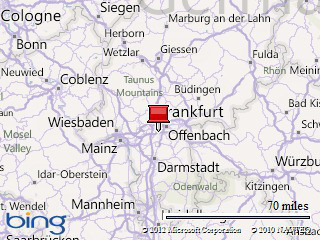








January 15, 2012
Martin Luther King Jr. Day
Today is Martin Luther King, Jr. Day, a day to reflect on the Rev. Dr. Martin Luther King, Jr. and his legacy. I remember standing on the steps of the Lincoln Memorial in Washington, D.C. looking down on the Reflecting Pool in 2004.The place looked much as it did when Dr. King stood in the same place on August 28, 1963, and delivered his famous "I Have A Dream" speech. I imagined the National Mall filled with a diverse audience listening intently to Dr. King. It must have been an amazing day. I remember hearing Congressman John Lewis talk about it in the 1990s when I worked in the U.S. Congress. I recall how his eyes lit up when he spoke of that historical day. I wish I had been there to see it.

The March on Washington, August 28, 1963
We have come a long way as a society in countering racism. While racism still occurs in the United States and around the world, most Americans would agree that racism has declined since Dr. King delivered his speech in 1963. We now have an African-American president, President Obama, whose father was from Kenya, mother a Caucasian from Kansas, and has a half-sister whose father was Indonesian. Income inequality, particularly among minorities, still exists and worsened during the recent economic downturn, but the days of segregation and institutionalized racism are over. This is Dr. King's legacy.
When President Ronald Reagan signed the holiday into law in 1983, a fact few remember, I wondered why the Federal Government would establish a holiday dedicated to someone who had not been elected to public office. I thought of Chief Joseph, Susan B. Anthony, Malcolm X, and Frederick Douglass, other influential pioneers of human rights in America who deserved to be honored. Now that we have an American-American president serving during a divisive period in U.S. history, I appreciate more than ever that the honor went to Dr. King, who rose above politics to focus on ideals. Each of us has our own view of what this holiday means to us. To me, it represents the celebration of unity and freedom regardless of race and creed. As Dr. King said in his 1963 speech:
When we let freedom ring, when we let it ring from every village and every hamlet, from every state and every city, we will be able to speed up that day when all of God's children, black men and white men, Jews and Gentiles, Protestants and Catholics, will be able to join hands and sing in the words of the old Negro spiritual, "Free at last! Free at last! Thank God Almighty, we are free at last!"
Most people have never read Dr. King's speech, one of the greatest orations in history. It sends a powerful message that still rings true today. What strikes me most is that Dr. King called on us to join hands in unity with those who are different. Therein lay the essence of freedom. This message is easy to disregard in our supercharged political environment. Americans need to come together in unity, not as Democrat or Republican, liberal or conservative, urban or rural, Red or Blue Stater, Tea Partier or Occupy Wall Streeter, African American, Caucasian, Asian, or Native American, but as Americans. The day this happens will be a very tremendous one for America. I can only hope and pray that day comes soon.
Here is Dr. King's speech in its entirety.
Dr. Martin Luther King, Jr.
"I Have A Dream"
The March on Washington
August 28, 1963
Five score years ago, a great American, in whose symbolic shadow we stand signed the Emancipation Proclamation. This momentous decree came as a great beacon light of hope to millions of Negro slaves who had been seared in the flames of withering injustice. It came as a joyous daybreak to end the long night of captivity. But one hundred years later, we must face the tragic fact that the Negro is still not free.
One hundred years later, the life of the Negro is still sadly crippled by the manacles of segregation and the chains of discrimination. One hundred years later, the Negro lives on a lonely island of poverty in the midst of a vast ocean of material prosperity. One hundred years later, the Negro is still languishing in the corners of American society and finds himself an exile in his own land.
So we have come here today to dramatize an appalling condition. In a sense we have come to our nation's capital to cash a check. When the architects of our republic wrote the magnificent words of the Constitution and the Declaration of Independence, they were signing a promissory note to which every American was to fall heir.
This note was a promise that all men would be guaranteed the inalienable rights of life, liberty, and the pursuit of happiness. It is obvious today that America has defaulted on this promissory note insofar as her citizens of color are concerned. Instead of honoring this sacred obligation, America has given the Negro people a bad check which has come back marked "insufficient funds." But we refuse to believe that the bank of justice is bankrupt. We refuse to believe that there are insufficient funds in the great vaults of opportunity of this nation.
So we have come to cash this check — a check that will give us upon demand the riches of freedom and the security of justice. We have also come to this hallowed spot to remind America of the fierce urgency of now. This is no time to engage in the luxury of cooling off or to take the tranquilizing drug of gradualism. Now is the time to rise from the dark and desolate valley of segregation to the sunlit path of racial justice. Now is the time to open the doors of opportunity to all of God's children. Now is the time to lift our nation from the quicksands of racial injustice to the solid rock of brotherhood.
It would be fatal for the nation to overlook the urgency of the moment and to underestimate the determination of the Negro. This sweltering summer of the Negro's legitimate discontent will not pass until there is an invigorating autumn of freedom and equality. Nineteen sixty-three is not an end, but a beginning. Those who hope that the Negro needed to blow off steam and will now be content will have a rude awakening if the nation returns to business as usual. There will be neither rest nor tranquility in America until the Negro is granted his citizenship rights.
The whirlwinds of revolt will continue to shake the foundations of our nation until the bright day of justice emerges. But there is something that I must say to my people who stand on the warm threshold which leads into the palace of justice. In the process of gaining our rightful place we must not be guilty of wrongful deeds. Let us not seek to satisfy our thirst for freedom by drinking from the cup of bitterness and hatred.
We must forever conduct our struggle on the high plane of dignity and discipline. we must not allow our creative protest to degenerate into physical violence. Again and again we must rise to the majestic heights of meeting physical force with soul force.
The marvelous new militancy which has engulfed the Negro community must not lead us to distrust of all white people, for many of our white brothers, as evidenced by their presence here today, have come to realize that their destiny is tied up with our destiny and their freedom is inextricably bound to our freedom.
We cannot walk alone. And as we walk, we must make the pledge that we shall march ahead. We cannot turn back. There are those who are asking the devotees of civil rights, "When will you be satisfied?" we can never be satisfied as long as our bodies, heavy with the fatigue of travel, cannot gain lodging in the motels of the highways and the hotels of the cities. We cannot be satisfied as long as the Negro's basic mobility is from a smaller ghetto to a larger one. We can never be satisfied as long as a Negro in Mississippi cannot vote and a Negro in New York believes he has nothing for which to vote. No, no, we are not satisfied, and we will not be satisfied until justice rolls down like waters and righteousness like a mighty stream.
I am not unmindful that some of you have come here out of great trials and tribulations. Some of you have come fresh from narrow cells. Some of you have come from areas where your quest for freedom left you battered by the storms of persecution and staggered by the winds of police brutality. You have been the veterans of creative suffering. Continue to work with the faith that unearned suffering is redemptive.
Go back to Mississippi, go back to Alabama, go back to Georgia, go back to Louisiana, go back to the slums and ghettos of our northern cities, knowing that somehow this situation can and will be changed. Let us not wallow in the valley of despair. I say to you today, my friends, that in spite of the difficulties and frustrations of the moment, I still have a dream. It is a dream deeply rooted in the American dream.
I have a dream that one day this nation will rise up and live out the true meaning of its creed: "We hold these truths to be self-evident: that all men are created equal." I have a dream that one day on the red hills of Georgia the sons of former slaves and the sons of former slaveowners will be able to sit down together at a table of brotherhood. I have a dream that one day even the state of Mississippi, a desert state, sweltering with the heat of injustice and oppression, will be transformed into an oasis of freedom and justice. I have a dream that my four children will one day live in a nation where they will not be judged by the color of their skin but by the content of their character. I have a dream today.
I have a dream that one day the state of Alabama, whose governor's lips are presently dripping with the words of interposition and nullification, will be transformed into a situation where little black boys and black girls will be able to join hands with little white boys and white girls and walk together as sisters and brothers. I have a dream today. I have a dream that one day every valley shall be exalted, every hill and mountain shall be made low, the rough places will be made plain, and the crooked places will be made straight, and the glory of the Lord shall be revealed, and all flesh shall see it together. This is our hope. This is the faith with which I return to the South. With this faith we will be able to hew out of the mountain of despair a stone of hope. With this faith we will be able to transform the jangling discords of our nation into a beautiful symphony of brotherhood. With this faith we will be able to work together, to pray together, to struggle together, to go to jail together, to stand up for freedom together, knowing that we will be free one day.
This will be the day when all of God's children will be able to sing with a new meaning, "My country, 'tis of thee, sweet land of liberty, of thee I sing. Land where my fathers died, land of the pilgrim's pride, from every mountainside, let freedom ring." And if America is to be a great nation, this must become true. So let freedom ring from the prodigious hilltops of New Hampshire. Let freedom ring from the mighty mountains of New York. Let freedom ring from the heightening Alleghenies of Pennsylvania! Let freedom ring from the snowcapped Rockies of Colorado! Let freedom ring from the curvaceous peaks of California! But not only that; let freedom ring from Stone Mountain of Georgia! Let freedom ring from Lookout Mountain of Tennessee! Let freedom ring from every hill and every molehill of Mississippi. From every mountainside, let freedom ring.
When we let freedom ring, when we let it ring from every village and every hamlet, from every state and every city, we will be able to speed up that day when all of God's children, black men and white men, Jews and Gentiles, Protestants and Catholics, will be able to join hands and sing in the words of the old Negro spiritual, "Free at last! Free at last! Thank God Almighty, we are free at last!"
Here are previous posts I wrote in honor of Dr. King and Rosa Parks, another pioneer in the American Civil Rights movement.
http://worldadventurers.wordpress.com/2005/01/19/reflecting-on-dr-king/
http://worldadventurers.wordpress.com/2006/01/17/martin-luther-king-jr-s-legacy/
http://worldadventurers.wordpress.com/2005/11/03/thank-you-rosa-parks/
M.G. Edwards is a writer of books and stories in the mystery, thrill and science fiction-fantasy genres. He also writes travel adventures. He recently published a collection of short stories called Real Dreams: Thirty Years of Short Stories available as an ebook and in print on Amazon.com. His upcoming travel novel, Kilimanjaro: One Man's Quest to Go Over the Hill, will be available in March 2012. He lives in Bangkok, Thailand with his wife Jing and son Alex. For books and stories by M.G. Edwards, visit his web site at www.mgedwards.com or contact him at me@mgedwards.com.








January 14, 2012
Elements of a Book Phenomenon (Part One)
I recently read Mockingjay, the final book in The Hunger Games trilogy by Suzanne Collins. The trilogy is the latest book sensation to follow on the heels of two other blockbuster series, The Twilight Saga by Stephenie Meyer and the Harry Potter series by J.K. Rowling. I read all three series in order to understand why they became runaway hits—and for fun, of course. As anyone not named Rip Van Winkle knows, Harry Potter became a cultural phenomenon with books, movies, and a litany of tie-ins. Twilight is well on its way to doing the same, although its popularity may wind down after part two of the movie Breaking Dawn hits theaters in November 2012.
The newest book sensation to take hold in popular culture seems to be The Hunger Games. With the first movie adaptation set to release in March 2012, the trilogy may catch fire like its protagonist, Katniss Everdeen, did in the Hunger Games. Some believe that The Millennium Trilogy by Stieg Larsson featuring Lisbeth Salander, the Girl with the Dragon Tattoo, was the next mega-series to follow Twilight. It has a large international following and not one, but two, movie adaptations. I would argue, however, that although it has elements of a book phenomenon, The Millennium Trilogy has not quite crossed over to literary immortality (except in Sweden, perhaps). That the movie version of The Girl with the Dragon Tattoo starring Daniel Craig and Rooney Mara was a disappointment at the box office supports my assumption.
Why do some book series, like The Millennium Trilogy, become bestsellers, while a few, like The Twilight Saga, become phenomena? What sets Harry Potter, a book series that Wikipedia estimated earned more than $450 million and counting (excluding the films), apart from R.L. Stine's Goosebumps novels that have grossed more than $350 million to date? Or The Hunger Games from another series some have compared to it, Gone by Michael Grant? Some books become bestsellers, even blockbusters, but never cross the nebulous line to cultural sensation. Movie adaptations play a role in whether a book series becomes a phenomenon, although many bestsellers are made into film but do not redefine popular culture. Having a large publishing company willing to sell licensing rights to hype a series helps, but it does not explain how some books catch fire while others fizzle. For those who are skeptical that a series like Twilight should be considered a phenomenon, keep in mind that a book does not have to be critically acclaimed to be a phenomenon; it has to influence popular culture. Based on this standard, Twilight certainly has.
If you are an author planning to write the Next Great Novel, how do you write a series that will become a book phenomenon? I have not written one and cannot draw from my own experience to tell you how to do it, but I have read and studied many series that became book sensations. Here's an obvious trajectory for bestselling book series. The first novel must become a bestseller with each successive novel building a larger audience. Once the books become a commercial success, movie adaptations attract a wider following and reinforce the books' messages. What transforms these series into phenomena, however, is the final phase in their evolution—they build a reciprocal relationship with popular culture, become synonymous with it, and redefine it. Consider the words "Hogwarts," "muggles," "Voltari," and "imprint." Each has made its way from the pages of Harry Potter or Twilight into the popular lexicon. A book series becomes a phenomenon when other books and media copy its formula, echoing the same themes as the original. Most copycats, however, never replicate the success of the original. The proliferation of paranormal romances, from vampires to fairy tales, is a result of Twilight's impact on culture. None are as successful.
In addition to the series I mentioned above, others as diverse as The Godfather, Gone With The Wind, and Lord of the Rings have become book phenomena. Each draws heavily on cultural themes that capture readers' imaginations and renders images into a strong story that, in turn, shapes popular culture. The Godfather by Mario Puzo drew from images of mafia families in New York and Italy and distilled them into a masterpiece that redefined in our minds what it meant to be a mobster. Gone With The Wind captured the imaginations of Depression-era audiences that recalled the American Civil War in the years before World War II. Many saw the idyllic world of southern plantations as a way to escape their own; the triumphs and tragedies of the protagonists, Scarlett and Rhett, mirrored readers own lives. Loosely based on geopolitics during the era of fascism and World War II, The Hobbit and the Lord of the Rings defined the fantasy genre for generations to come. Virtually every fantasy written since then has at least some elements of Tolkien's Middle Earth.
Now, it's time for The Hunger Games. This intriguing series touches on contemporary themes of modern warfare, the media, and reality television, and combines them with society's infatuation with post-apocalyptic worlds. Few aspects of Collins' books are original, but the way in which she turns popular images and ideas into a compelling story reverberates in a way that may transform it into the next book phenomenon. Whether The Hunger Games crosses over to literary immortality depends on how its movie adaptation performs at the box office. If ticket sales are disappointing, as is highly unlikely, it could go the way of Christopher Paolini's Inheritance Cycle, a book series whose upward trajectory was cut short by a poorly made film.
I have identified some key elements a book series should have in order to become a book phenomenon. Stay tuned next week for part two, where I discuss these elements in detail.
This is part one of a two-part series examining what transforms a book series into a phenomenon.
M.G. Edwards is a writer of books and stories in the mystery, thrill and science fiction-fantasy genres. He also writes travel adventures. He recently published a collection of short stories called Real Dreams: Thirty Years of Short Stories available as an ebook and in print on Amazon.com. His upcoming travel novel, Kilimanjaro: One Man's Quest to Go Over the Hill, will be available in March 2012. He lives in Bangkok, Thailand with his wife Jing and son Alex. For books and stories by M.G. Edwards, visit his web site at www.mgedwards.com.
© 2012 Brilliance Press. All rights reserved. No part of this work may be reproduced or transmitted without the written consent of the author. Contact M. G. Edwards at me@mgedwards.com for more information.








January 10, 2012
Lake Kariba, Zambia with Photos
My wife and I went on a short weekend getaway to Lake Kariba in February 2011. What an amazing not-so-hidden gem. Few people have heard of this body of water that happens to be the world's largest artificial lake and reservoir. Straddling the Zambian-Zimbabwean border, it was created in 1958 during the construction of the Kariba Dam when it was near completion, and engineers sealed the dam and flooded what had once been a large valley in the Zambezi River Basin.
Lake Kariba is overshadowed in Zambia and Zimbabwe by nearby Victoria Falls, arguably the world's largest waterfalls, as well as by game parks and private reserves scattered throughout the region. I think that Lake Kariba holds its own as a tourist destination, and I recommend a visit to anyone planning a trip to see the falls.
Hippopotamuses, crocodiles, baboons, freshwater fish, and several bird species call the lake home, although they make fewer appearances than one would expect for such a large body of water. The wildlife that attracts gawking tourists is concentrated further east in the game parks of the lower Zambezi River Basin. Nevertheless, the lake does not lack for vegetation and scenic beauty.
Whenever the lake comes up as a potential travel destination, locals tend to respond "don't swim in the water!" because it is a breeding ground for bilharzia, or schistosomiasis, a snail-borne parasitic disease, and crocodiles. Avoiding the water notwithstanding, Lake Kariba is well worth a visit, especially if you want to enjoy a quick getaway to a place with scenic views and a relatively safe natural environment. While the area offers few children's activities, families can still enjoy what it has to offer. Don't forget to pack some books or games for the kids to alleviate boredom. The weather varies during the rainy season, so it's important to check the weather conditions before visiting the lake.
We stayed at the aging Lake Kariba Inns, one of the nicer resorts in the town of Siavonga, Zambia that passed as a three-star hotel. At just over US$100 per night during the off-season in 2011, the price was reasonable compared to some overpriced Zambian safari lodges that charged upwards of $400 per night. The room was clean and comfortable, although like many rural lodges, it was still infested with its fair share of unwanted critters. The ants carried off any food in sight, so we had to keep it sealed. The villas with lakefront verandas had gorgeous views of the lake. I deluded myself into thinking that I was on the Mediterranean when I lounged on the veranda, an illusion that lasted as long as it took for the fishermen plying on crayfish and fish to pass by in their large trawlers.
The resort's amenities included a large gym and a poolside bar with a pool table and Ping-Pong table. The waterfront restaurant served decent food with a decidedly Indian flavor; the curry and yogurt dishes were tasty. We were disappointed that the inn had run out of crayfish, a local specialty. Lake Kariba Inns' Achilles' heel was its average customer service. Some staff members were helpful; some were not. Whenever the buffet was served in the restaurant, it was virtually impossible to order room service.
Lake Kariba Inns sits atop one of the promontories overlooking Siavonga with its own harbor with boats ready to take guests on an affordable, two-hour lake cruise to the top of the Kariba Dam and lake islands. The lake cruise was well worth the money. It left in the late afternoon not long before sundown. My wife and I basked in the glow of an African sunset from Sampa Karuma Island, a deserted island on the Zimbabwean side of the lake (no visa needed). Although the weather was calm for most of the cruise, the waves kicked up after sunset, and we held on as the boat rocked its way back to shore.
Many lodges are located in and around Siavonga. Lake Safari Lodge, Eagle's Rest, and Sandy Beach are other popular lodging options. Although we did not visit any of them, we were under impression that they were comparable to Lake Kariba Inns. For those who want to experience the lake up close and personal, Protea Hotels launched in 2011 the Southern Belle Hotel, a former steamboat converted into a floating resort. The Southern Belle operated in Lake Kariba for years before Protea refurbished it.
To view or tour Kariba Dam from Siavonga, drive to the Zambia-Zimbabwe border about eight kilometers (five miles) from town, park at the border post, and ask Zambian Immigration for a gate pass. You can walk from there down to the Zambezi River for good views below the dam; the gate pass will permit you to reenter Zambia. You can also see it from the Zimbabwean side. The dam's spillway opens fully in early February, allowing water that built up from the rainy season to pass down the Zambezi River. While not as spectacular as Victoria Falls, the dam is still worth a look-see. Constructed between 1955 and 1959 by the Italians, it was being expanded by the Chinese when we visited.
The town of Siavonga on the shores of Lake Kariba is a mixture of homes, hotels and resorts, and a central district with local businesses. Some wealthier Zambians own second (or third) homes on the lake. The hilly terrain around the town is ideal for walks and hikes. Lake Kariba Inns has a beach walkway that follows the lake and a game walk with great views of the lake. The streets of Siavonga are fun to explore on foot. We were told that the area is relatively safe for tourists; however, it's important to be aware of your surroundings if you choose to tour the town. Leave valuables at the hotel.
If you want to enjoy the outdoors in Southern Africa but are not in the mood to go on safari, or you are looking for an extra stop on your visit to Zambia or Zimbabwe, see what Lake Kariba has to offer.
This is an updated version of a blog entry originally posted in February 2011 .
M.G. Edwards is a writer of books and stories in the mystery, thrill and science fiction-fantasy genres. He also writes travel adventures. He recently published a collection of short stories called Real Dreams: Thirty Years of Short Stories available as an ebook and in print on Amazon.com. His upcoming travel novel, Kilimanjaro: One Man's Quest to Go Over the Hill, will be available in March 2012. He lives in Bangkok, Thailand with his wife Jing and son Alex. For books and stories by M.G. Edwards, visit his web site at www.mgedwards.com.








January 7, 2012
Twitter as a Marketing Tool
I've been using Twitter for the past few months to connect with other writers, meet new acquaintances, and build a following for my writing. Some successful authors claim that their sales took off after they built a Twitter following, and I believe them. Based on my preliminary efforts, Twitter seems a more effective marketing tool than Facebook, LinkedIn, Google+, and other social media sites. This, of course, could change over time, as the executives at MySpace can attest. Other social media sites have their own benefits. In my opinion, Facebook is a better forum than Twitter to connect with friends and family who may be the only ones supportive of your writing at the outset of your career.
My quest to figure out what works on Twitter has been one of trial and error learning how to use Twitter effectively. The result has been good, so far, with my number of followers increasing more than 300 percent in December 2011 and already up by a third one week into January 2012 (thank you, followers!). One ebook giveaway I tried received several responses; an offer to purchase my ebook at a discount did not net any new sales. I will continue to offer a mix of incentives to attract readers until I find a strategy that works.
I'm slowly getting the hang of Twitter. I've found that unless you want to buy followers, it simply takes time to build a following. Buying followers is ethically suspect and defeats the purpose of building lasting relationships. Simply put, tweeting, or sending messages (tweets), takes time.
When you tweet, it's important to:
Follow others. The best way to gain new followers is to follow others. Search "Who To Follow" to find others who tweet about your interests and follow them. Twitter will then suggest others you might want to follow. Many will follow you back. Unless you're a celebrity, you're probably going have to knock on doors first.
Post relevant content. I like to post links to breaking news articles related to my interests. I like travel, politics, and self-publishing, so many of my tweets focus on these subjects.
Have a brand. Focus on what's important to you and tweet about it. Those interested in finding you will. If your brand is based on a popular character, such as a protagonist in a book or your pet, and you have the right to represent them, you can set up an account for them and tweet on their behalf.
Be creative. Those who have something interesting to share or assume a creative persona on Twitter tend to do well. Some cats have larger followings than most humans.
Public thank yous. Thank followers publicly for following you by tweeting it. I have a small following and still send individual "thank you" tweets to new followers with a personal note attached. Some with more followers write "thank you" and list new followers in a single tweet.
Retweet. Repost newsworthy items posted by your followers. When they mention you to their followers, thank them publicly.
Direct messages. Send private messages to followers in order to cultivate relationships. Be genuine and sincere, not patronizing. I don't think it's a good idea to send a spam ad to new followers as a message, although some do. Product placement is okay as long as what you're offering is of interest to your followers.
Tweet frequently. Tweet as often as you can. Since none of us can tweet 24 hours a day, use a site such as BufferApp to program tweets to post automatically while you're away. Keep them relevant. I started posting humorous "Your Friendly Sleeptweeter" tweets while I'm away that play up the fact that I'm still tweeting while I'm sleeping. Here's an example: "Greetings from your friendly sleeptweeter. I'm just passing through on my way to dreamland to greet you with a hearty zzz."
Sell, but don't overdo it. It's okay to advertise something you're selling such as a book, but do it sparingly. I've read that a 20:1 ratio (one advertisement per 20 tweets) is a good ratio. The more you look like a pusher, the more you will turn off your followers.
Only time will tell if these efforts will pay off for me. They seem to be working so far, and I'm looking forward to seeing whether these efforts bear more fruit in the coming year.
Follow me on Twitter at @m_g_edwards. I'm happy to follow back.
M.G. Edwards is a writer of books and stories in the mystery, thrill and science fiction-fantasy genres. He also writes travel adventures. He recently published a collection of short stories called Real Dreams: Thirty Years of Short Stories available as an ebook and in print on Amazon.com. He lives in Bangkok, Thailand with his wife Jing and son Alex. For books and stories by M.G. Edwards, visit his web site at www.mgedwards.com.








January 5, 2012
Damnoen Saduak Floating Market in Thailand
We visited the floating marking in the Damnoen Saduak District of Ratchaburi Province on the last day of 2011. Arguably the most famous floating market in Thailand, it is located off Highway 325 about 110 kilometers southwest of Bangkok. To get there, turn off the Rama II Highway at the city of Samut Songkhram and follow Highway 325 north for 15 kilometers.
The floating market runs daily from morning until about 3 p.m., when most merchants close up shop. The best time to visit is in the morning when the market is most active. Its footprint covers about one square kilometer and includes several open air markets that line a network of narrow canals (khlong, in Thai).
Some shops are accessible by foot via narrow walkways that follow the canals, although most vendors sell food and souvenirs from boats or shops on shore that tourists can only visit by boat. Madam Pauw's businesses occupy the most real estate. She runs a large store, café, coffee shop, and boat tour along the main canal. A friendly lady, you can meet her at the cash register in the main store.
Sources indicated that the canals in Damnoen Saduak District have been in existence since 1866, when the Thai King Rama IV commissioned a 32-kilometer long canal system fed by the nearby Mae Klong River. The market is a more recent development but has been in existence since at least the 1960s, when the canal scene in The Man with the Golden Gun was filmed there. James Bond floated down the Damnoen Saduak floating market in the 1970 film. The 2008 Nicolas Cage film Bangkok Dangerous also featured the market. Many local vendors operate shops out of their homes and live behind or above their stores. A network of trails and footbridges limited to residents gives them access to the highway. The rural area beyond the market features a mixture of houses and fields where farmers grow rice, Malacca grape, pomelos, mangoes, bananas, and coconuts that are available to purchase at the floating market.
The Thai architecture and vendors in wooden boats with colorful dress and flattop Asian straw hats are major draws for throngs of tourists who want a taste of traditional Thailand. Tourists can explore the market in motorized or hand-rowed boats that cost between 300 Thai baht (US$10) for 30-40 minutes or 600 baht ($20) for an hour. There are several boat operators in the market who will likely solicit you for a ride; shop around for a better deal. We went with the first operator who approached us and found out that another one would have charged the same amount for a longer ride.
Many vendors sell Thai dishes cooked right on their boat that are cheap and delicious. We ate a hearty meal of chicken satay (spicy peanut sauce) skewers, white rice, and bowls of noodle soup for 180 baht (about US$7). The Thai iced tea (sweet tea with milk) cost 30 baht (US$1). Of course, for those who are less adventurous, there are several coffee shops and a 7-11 convenience store in the market that sell packaged western food.
Not far from the floating market lie a couple other tourist attractions. The Rose Garden is a popular stop to smell the roses after the market. We did not visit the garden but heard that it is beautiful. Tourists can also meet Asian elephants at the market at certain times of the day and go on an elephant trek through the canals.
Damnoen Saduak is a great daytrip as long as you go when traffic is light. The morning and evening rush hour commutes and holiday traffic can make the trip a longer one than it needs to be. The trip is faster if you travel during off-peak times during weekdays and on weekends.
Video clip of the Damnoen Saduak Floating Market
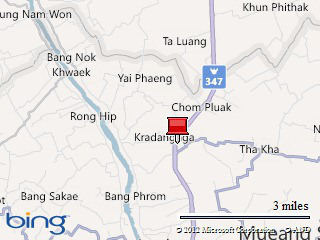








January 3, 2012
I Am No Longer A Foreign Service Officer
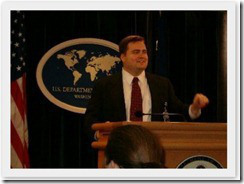 A post I wrote in October 2006 called "What is a Foreign Service officer?" ranks among this blog's most popular entries. I wrote it during the heady days when I was looking forward to a long career as a diplomat and retiring from the Foreign Service. Alas, it was not meant to be. I resigned from the U.S. Department of State last year to pursue other interests, a decision that I do not regret and am thankful I made.
A post I wrote in October 2006 called "What is a Foreign Service officer?" ranks among this blog's most popular entries. I wrote it during the heady days when I was looking forward to a long career as a diplomat and retiring from the Foreign Service. Alas, it was not meant to be. I resigned from the U.S. Department of State last year to pursue other interests, a decision that I do not regret and am thankful I made.
I owe it to readers who read my earlier post a balanced view of the Foreign Service that cannot be found in the Foreign Service Journal, AFSA press releases, State Department literature, or blogs written by diplomats or their dependents. Most of what you read online about the Foreign Service is rosy and, in my opinion, defends it to a fault. Perpetual sunshine about the Foreign Service does not tell the full story and does a disservice to those who are interested in becoming Foreign Service officers and need a more realistic picture of what to expect.
If you are interested in a career as a Foreign Service officer, you should seriously consider these points before embarking on the lengthy and competitive application process. I do not want to dissuade you from pursuing your dream, but you should be aware of some realities of Foreign Service life that are not well publicized. These views are my own but have been reinforced by years of firsthand observations and conversations with peers. Many of my colleagues shared these sentiments.
1. Worldwide Availability. You are expected to be available for service worldwide, and your personal preferences may not be taken into account. You may be called to go somewhere you don't want to go that could put your life at risk. The needs of the service supersede yours. Expect to serve in places you may not want to be.
2. Separation. Be prepared at some point in your career to be separated from your family and serve unaccompanied. If your spouse or partner also works for the Department, expect to do separate tours at least once in your career, possibly more. As of last year, over ten percent of all posts were unaccompanied. If keeping the family together is your raison d'être, you may be disappointed.
3. U.S. Interests. Expect to promote U.S. foreign policy. There is little room for altruism and idealism if it does not coincide with U.S. interests. These interests depend on the administration in office, and whatever you advocated may change at any time. You do not serve your country. You serve the Federal Government and hope that it is doing what's best for your country.
4. Frequent Moves. Be prepared to move frequently. In some cases, this may mean a short tour of one year or less in a conflict zone, a short-term assignment, an evacuation, or a reassignment to another post. You will move from place to place every two-to-three years, or sooner, unless you can find a different assignment at the same post. While moving from country to country may seem exciting to some, relocation ranks as one of the biggest headaches for Foreign Service families.
5. Bureaucracy. Get used to working in a bureaucracy. You work for the Federal Government. It may be "cool" being a diplomat, but you are still a member of the bureaucracy. Expect decisions and paperwork to move slowly through the system, if at all. Often they will be "overcome by events," a fancy term that means you did a lot of work for nothing. You will do an immense amount of paper pushing in the office until you're senior enough to have support staff to do it for you.
6. Unfair Rules. "Fair" is a four-letter word. Do not expect justice or fairness. The rules are written to be equalizers and may make no sense. Expect "no" as an answer to even the most logical requests and massage the rules until you get to "yes." You are subject to the Foreign Affairs Manual and federal regulations. In a rule-based organization, those who know the rules and how to work the system tend to do better. Those who expect fairness, justice, or hold firm in their resolve often go wanting. The Foreign Service has few options for those who want to pursue a complaint because the rules were written with the Department's interests in mind.
7. Multiple Clearances. Do nothing until you have cleared with everyone who needs to approve whatever you're doing or face potential consequences. Your superiors are ultimately responsible for your actions under mission authority and can take disciplinary action if you misstep. If you're a free spirit or like to do things your own way, think twice. Measure as many times as it takes to get full clearance and then cut.
8. No Privacy. Do not expect to have any privacy. Your life is on public display, and you are expected to lead yourself in public responsibly. Do nothing privately you would not want to see end up in the pages of the Washington Post. Everyone wants to know what you're doing. Everyone, inside and out.
9. Unhealthy Work Environment. Expect to work with a variety of personalities from many cultures. Given its high-pressure working environment, the Foreign Service has elevated levels of stress that can negatively influence behavior. While many employees are excellent colleagues, the Department has its fair share of bad bosses and nasty coworkers. The Department's hierarchical clearance and promotion systems are designed to give leverage to those in positions of authority. They can make your life miserable if you're not compliant or simply rub them the wrong way. Try to get along, even if it goes against every fiber in your being, because with perseverance you too will rise to a position of authority and eventually exert your own leverage.
Michael Gene (M. G.) Edwards is a writer of books and stories in the mystery, thriller and science fiction-fantasy genres. He also writes travel adventures. A former U.S. diplomat, he served in South Korea, Paraguay, and Zambia before resigning in 2011 to write full time. He is recipient of numerous State Department awards, the Joint Civilian Service Achievement Award from the U.S. Department of Defense, and a commendation from the Ministry of Foreign Affairs of the Republic of Paraguay. He lives in Bangkok, Thailand with his wife Jing and son Alex. For books and stories by M.G. Edwards, visit his web site at www.mgedwards.com. Contact him at me@mgedwards.com or on Facebook or Twitter.
The views in this blog entry are solely those of the writer and do not represent the views of the U.S. Department of State.










